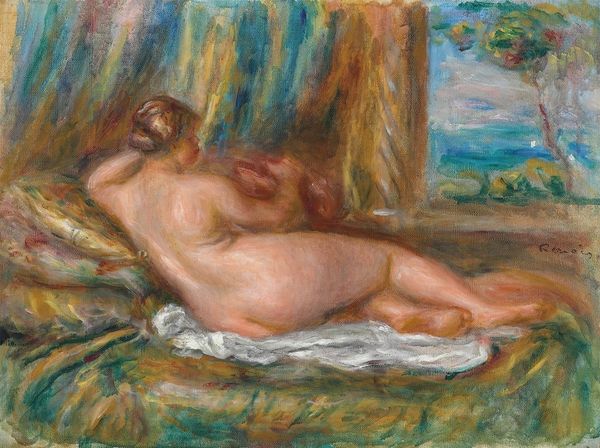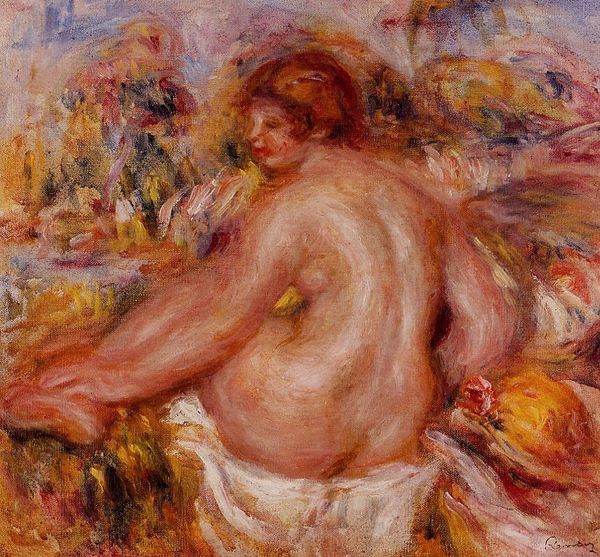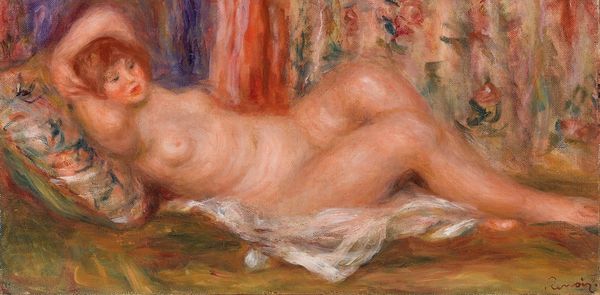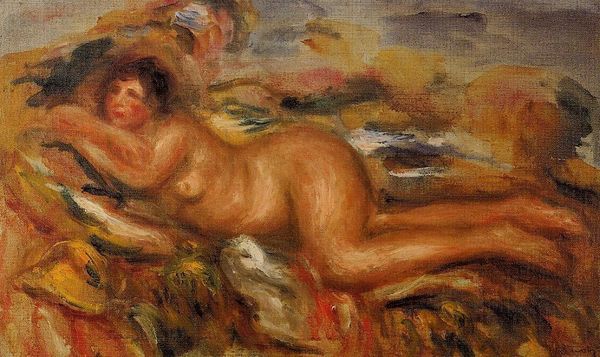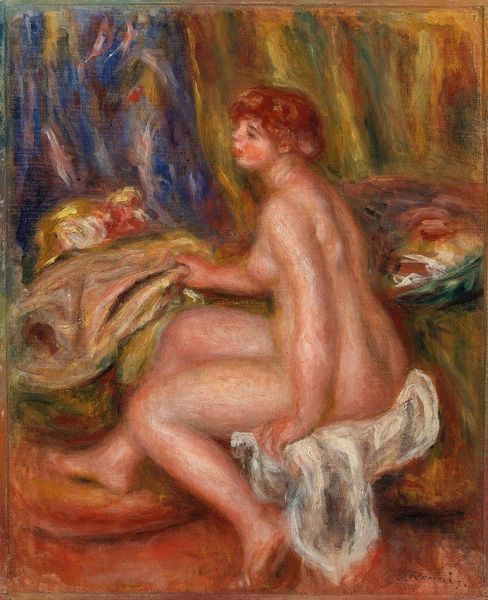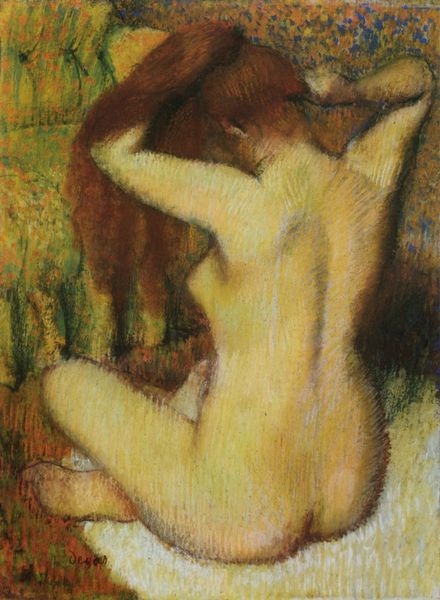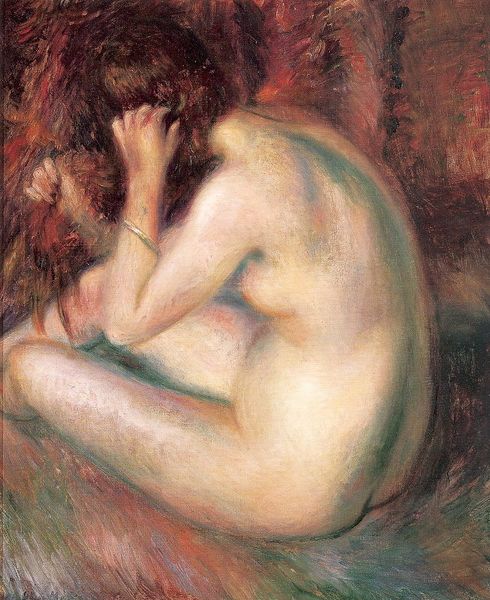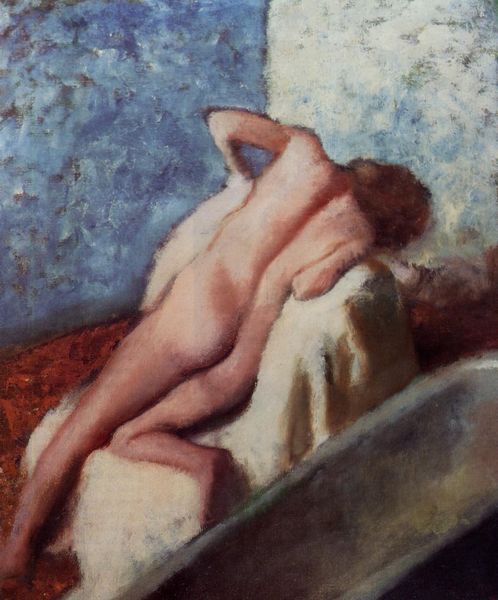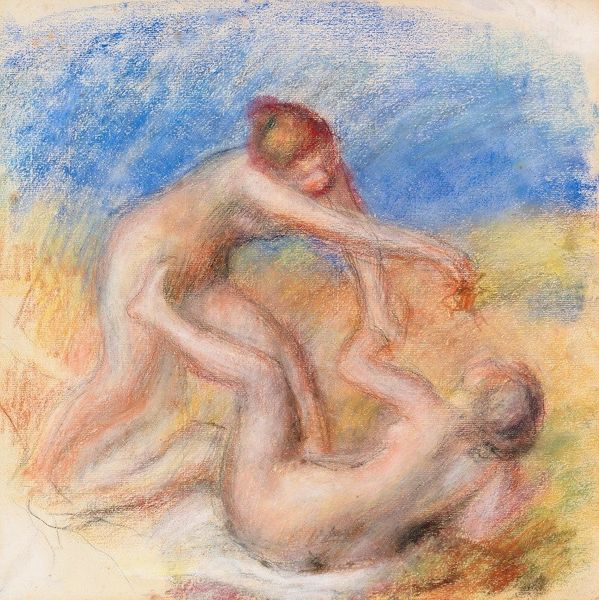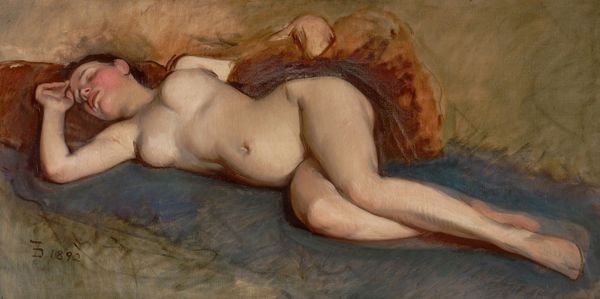
oil-paint
#
oil-paint
#
landscape
#
figuration
#
oil painting
#
female-nude
#
symbolism
#
nude
Copyright: Public domain
Curator: Here we have "Nude Woman on the Rocks", an oil painting by Odilon Redon. Art Historian: My initial impression? The earth tones juxtaposed against the pastel sky create a rather pensive mood. There's something both powerful and vulnerable about that lone figure. Curator: Precisely. Redon's exploration of the female nude here moves beyond mere representation; it's a commentary on isolation and the self. Note how the figure seems integrated with the landscape itself. Do you see that rocky formation almost mirroring her form? Art Historian: I do. Considering Redon's historical context, moving away from strict realism towards symbolism was radical. It rejected the dominant academic styles. His paintings also hint at his ties with writers and intellectuals in Paris. Do you believe there’s an intentional subversion of classical depictions of female nudes here? Curator: Undeniably. Instead of an objectified portrayal, we find a figure reflecting on something deeper, perhaps even embodying the very landscape she inhabits. The averted gaze, the contemplative pose – it all speaks to a complex inner life. The absence of classical, smooth lines makes me think of how he represents lived, experienced flesh as well, almost mirroring personal feelings. Art Historian: And it's vital to remember the social expectations of the era. Female artists and models contended with restrictive representations, influencing a search for alternative perspectives and forms. One needs only look at Suzanne Valadon's paintings, as one key example, and her complicated place within Parisian artist circles as muse, mother and eventually established artist in her own right. Curator: Exactly. Considering our moment and this piece together, Redon subtly confronts power dynamics through both form and thematic content. It pushes me to reconsider traditional notions of beauty and the female gaze within broader dialogues on gender, identity, and autonomy. Art Historian: A perfect conclusion, and an insightful way to interpret and view the artwork today! Curator: Agreed, it gives the audience much to think about regarding not only artistic practices, but also representation.
Comments
No comments
Be the first to comment and join the conversation on the ultimate creative platform.

